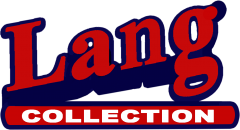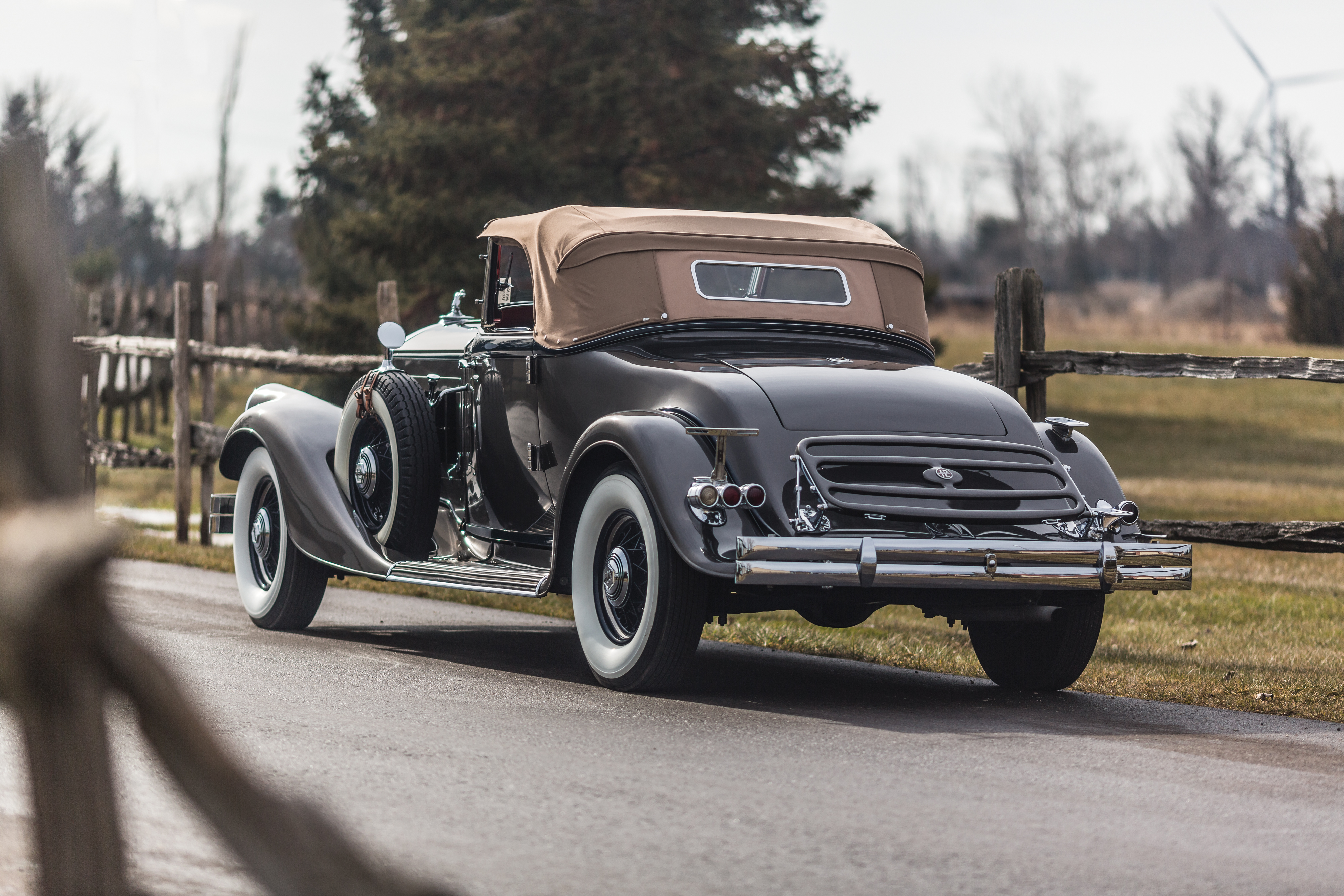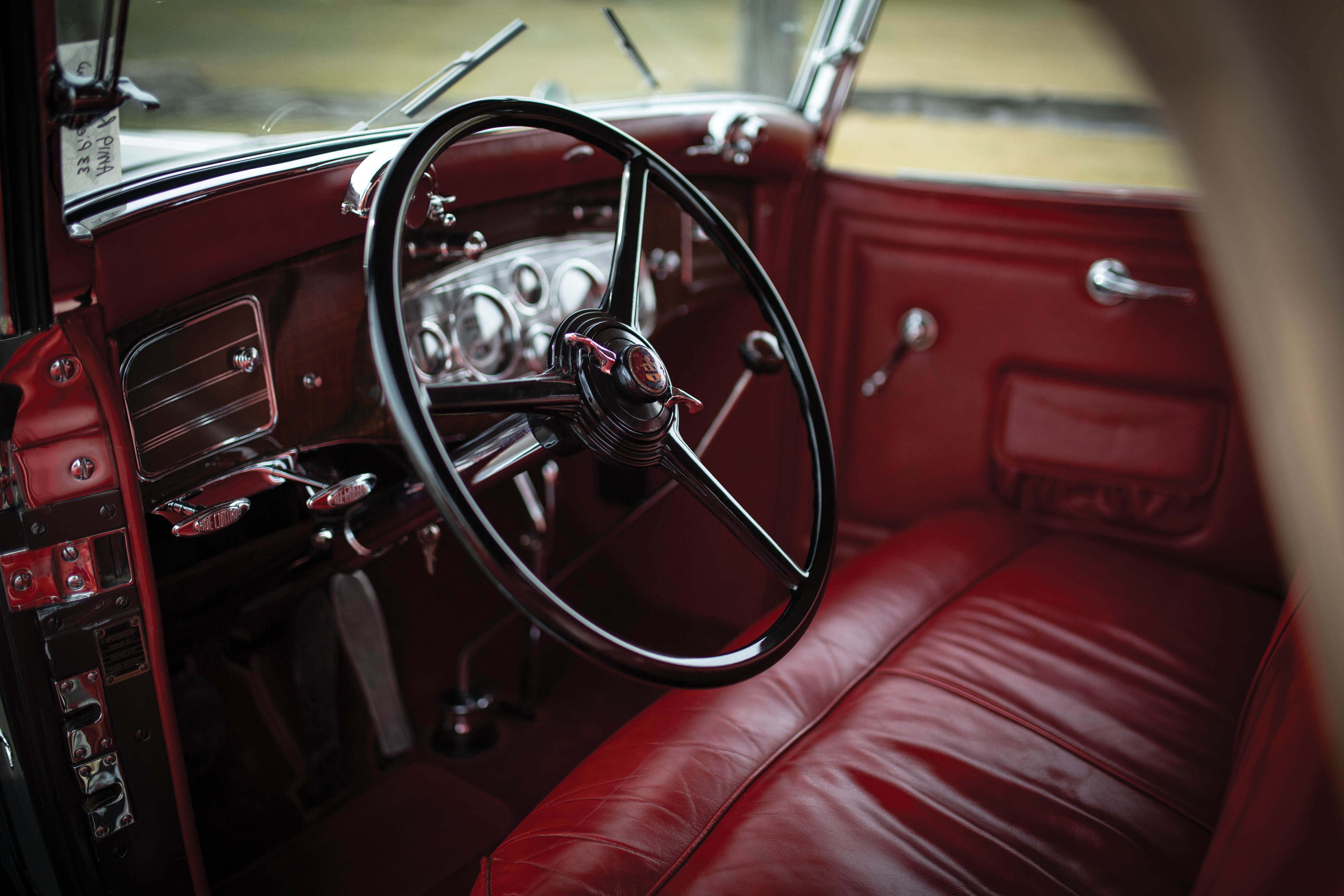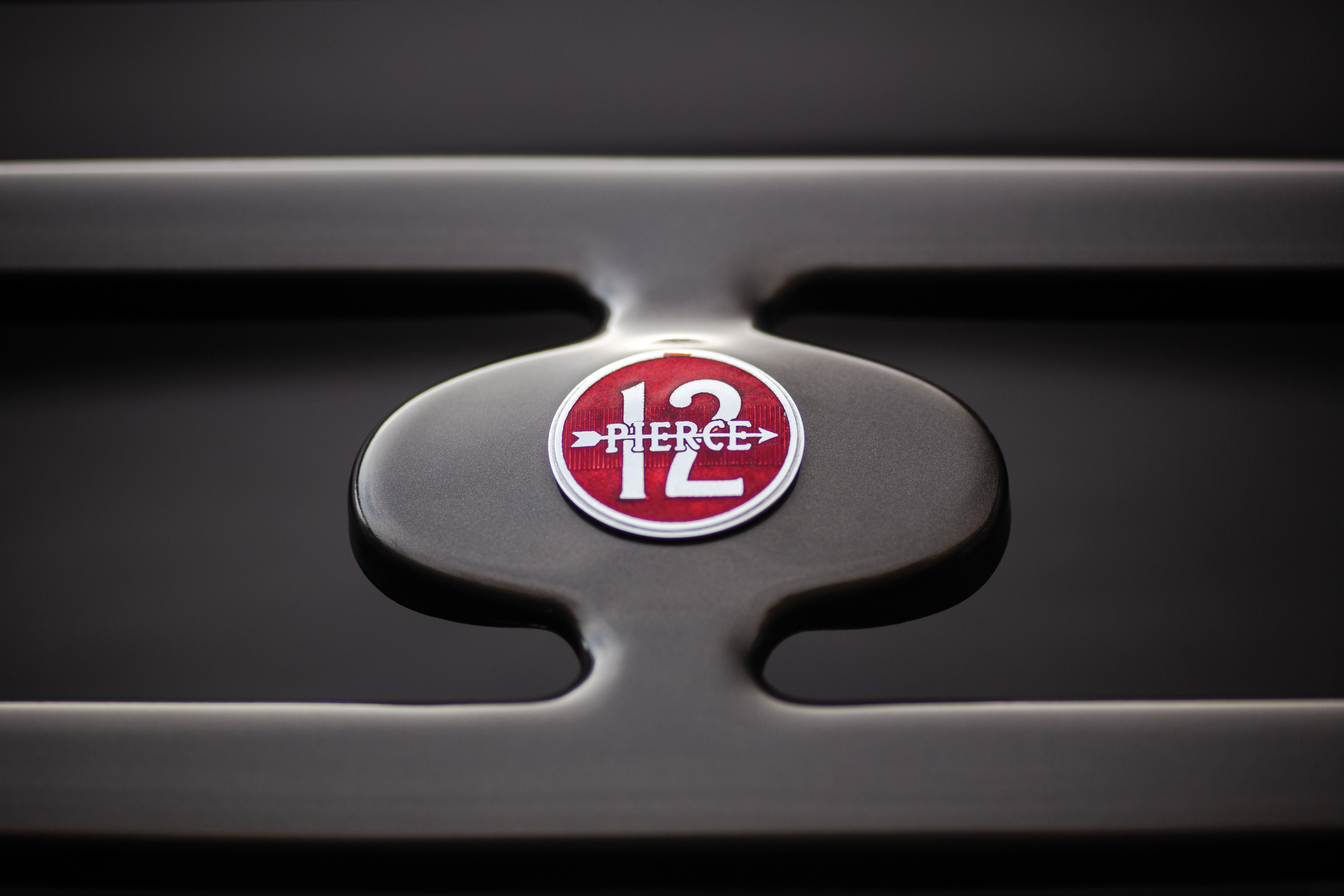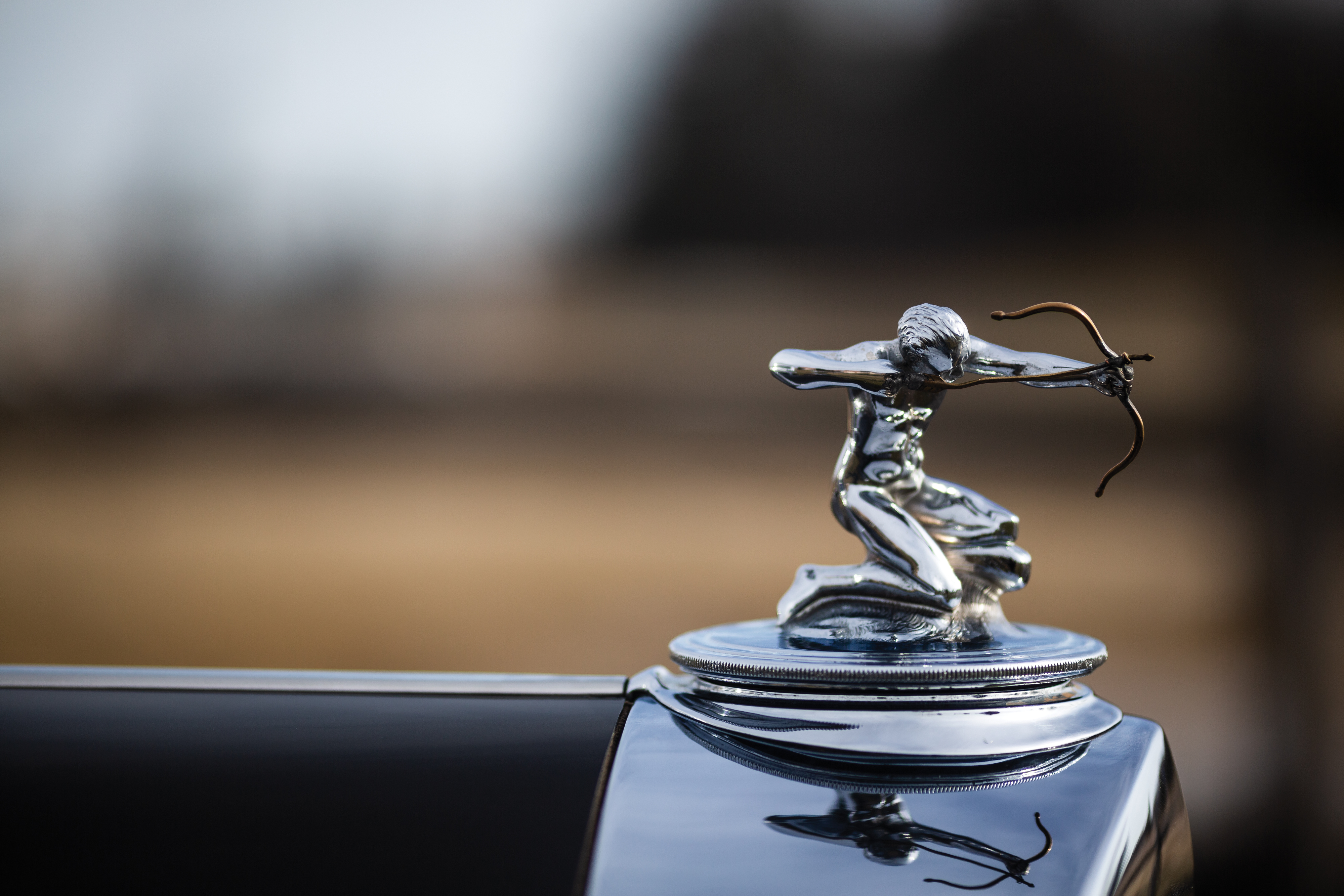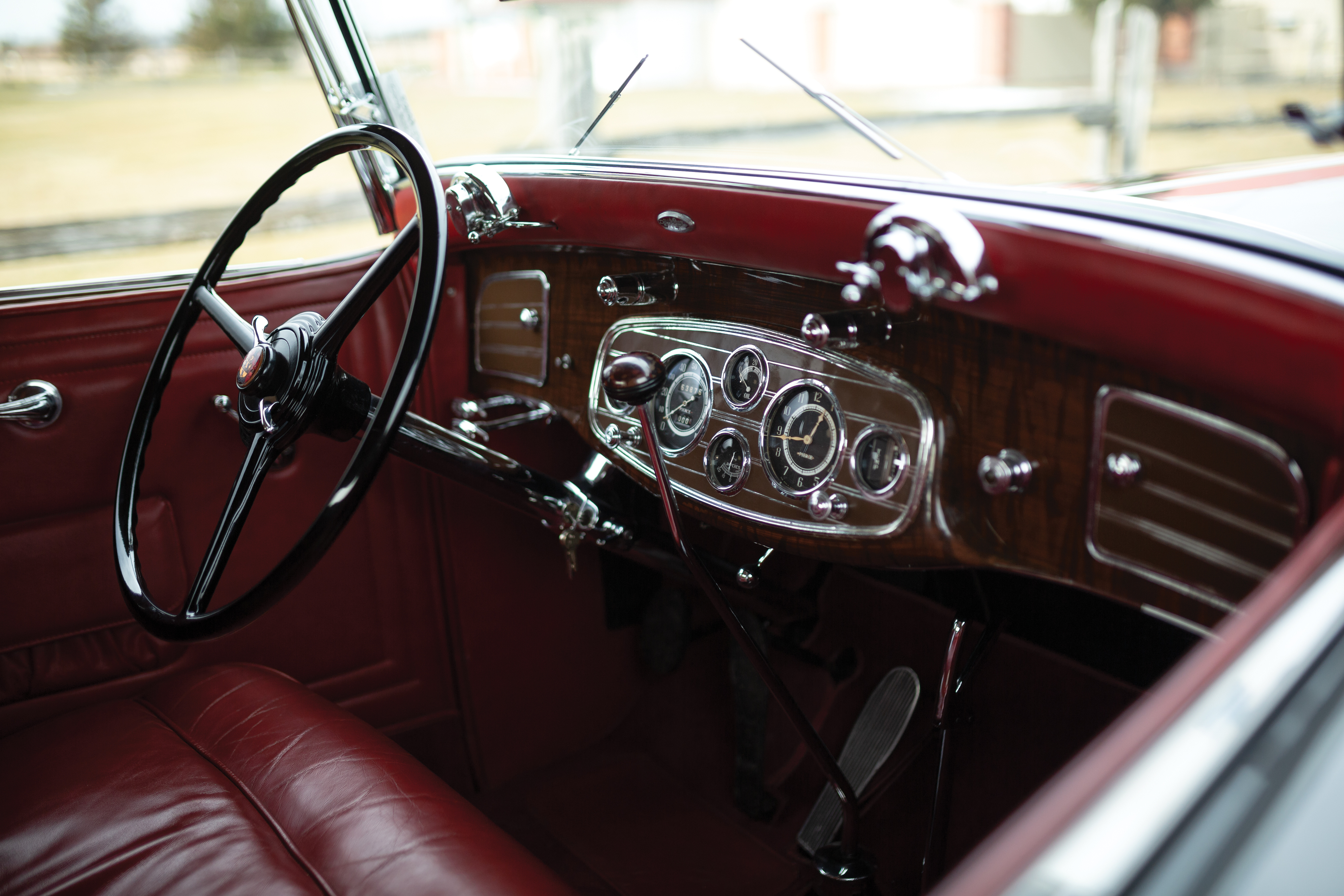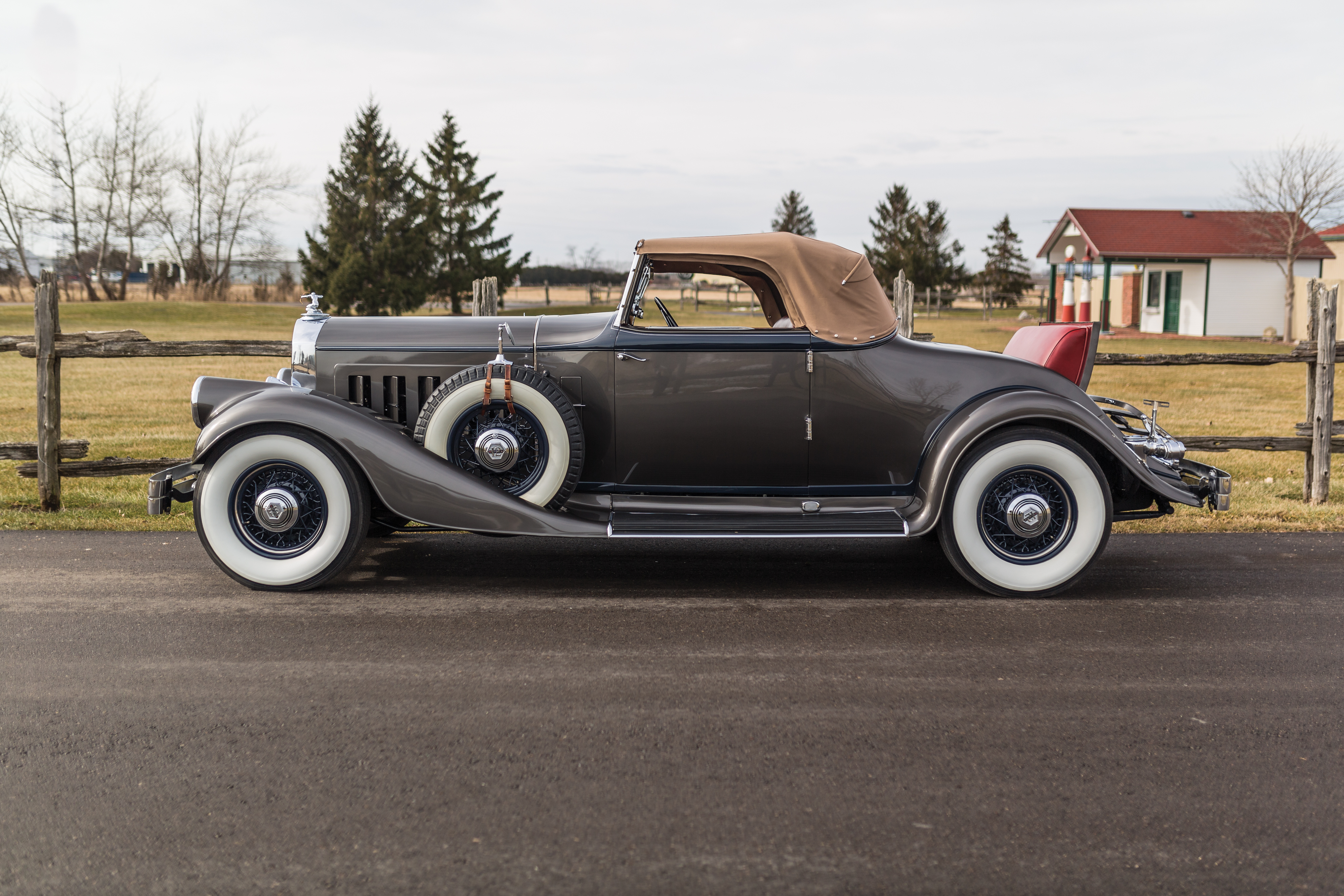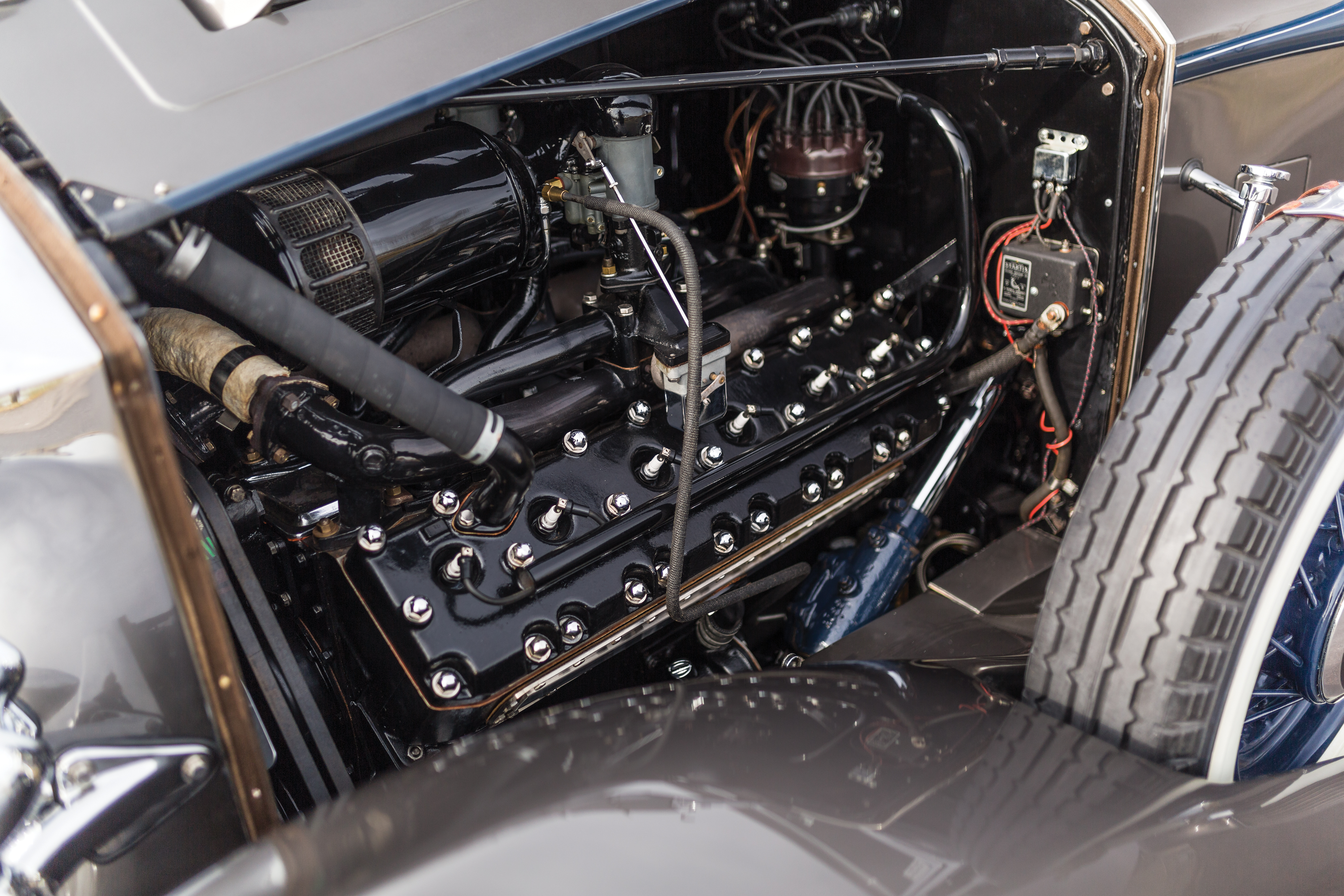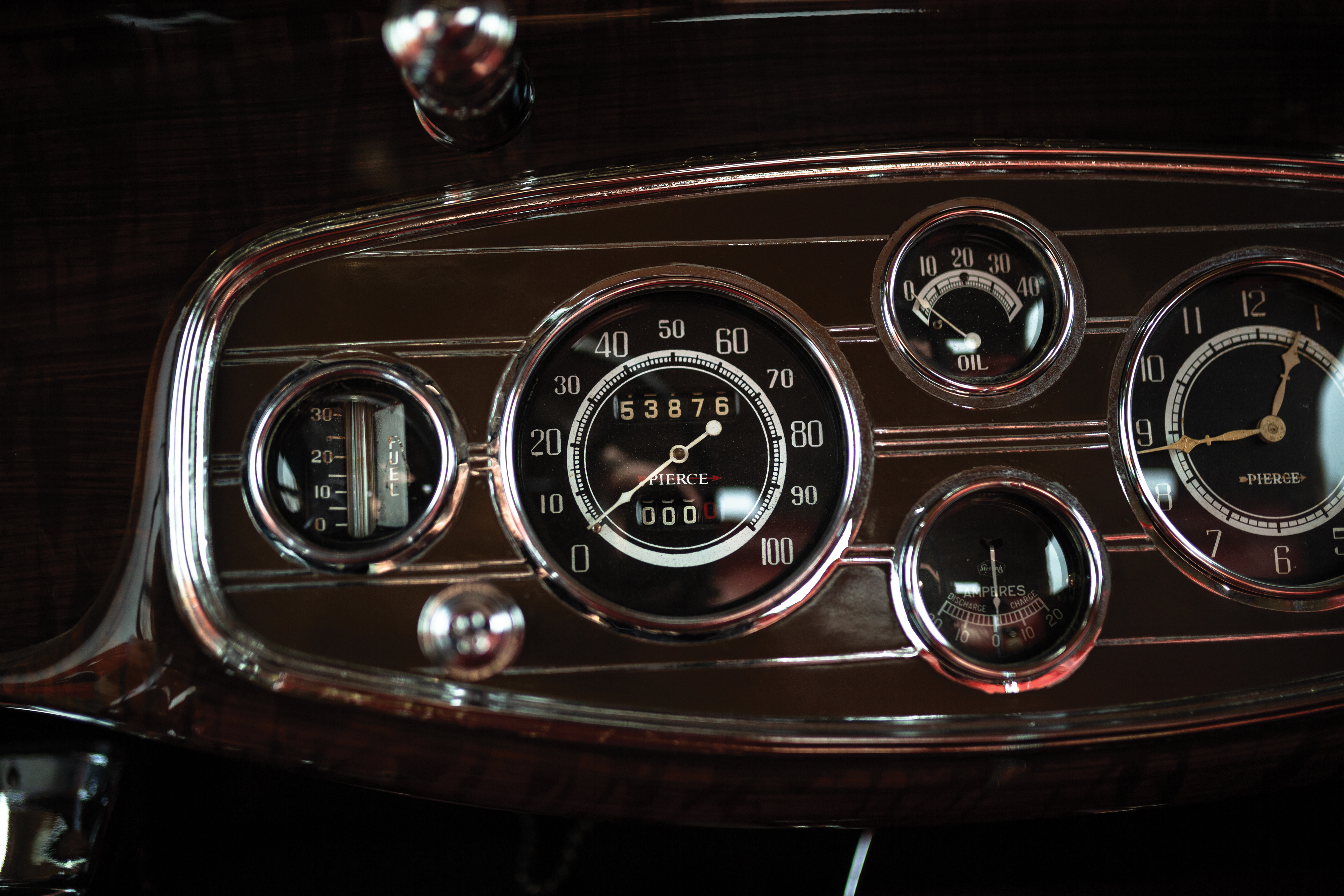1933 Pierce-Arrow Twelve Convertible Coupe NO 09
One of only three 1933 Pierce Arrow V12 Convertible Roadster known to exist
A Registered Classic Car Club of America (CCCA) Full Classic
V12 Side Valve 462 cid Engine Developing 175hp at 3400rpm
Manual three speed transmission Stewart Warner power assisted drums
Red Leather / Red Carpeting Deep Pewter with Blue Belting Exterior
Stromberg Carburetor Twin Coil Delco-Remy Ignition System
Rare Suicide Doors Dual Horns, driving/fog lamps
Dual Side Spare Tires Teardrop style body-integrated head lamps
In 1933 a Pierce Arrow V12 driven by Ab Jenkins set the world record of 117.77 mph on the Bonneville Salt Flats. All told that week the Pierce Arrow V12 set 14 FIM and 66 AAA speed and endurance records in both class and over-all divisions.
Pierce Arrow
Established in 1872, the George N. Pierce Company made housewares. In 1896 they added bicycles to their product line and over the next few years attempted to build and sell steam cars (1900), and single-cylinder, two speed no reverse vehicle (1901), before, in 1903 building a four cylinder car called the Arrow. In 1904 Pierce decided to go upscale and build more luxurious entry in the upscale market called the Great Arrow. The Great Arrow proved to be very successful both in the marketplace and in competition having won the Glidden Tour in 1905. The Glidden Tour was a 350 mile endurance run from New York City to Bretteon Woods, NH.
Like the Packard plant in Detroit, noted architect Albert Kahn designed the new factory for Pierce in Buffalo NY in 1906. In 1907 the Pierce Motor Company was sold and renamed The Pierce-Arrow Motor Car Company. Over the next many years Pierce-Arrow established itself as one of the great marquees of the world auto market. Along with Packard and Peerless, Pierce-Arrow was a member of the “Three Ps,” the alliterative triumvirate of the luxury car segment that had always featured large engines. “From 1910 to 1928, though, they had been T-head sixes. For 1929, a straight-eight replaced the sixes. It proved popular, doubling sales from the year before. But as Cadillac, Packard, and Lincoln introduced twelve-cylinder engines, and Cadillac and Marmon readied their sixteens, Pierce, too, joined the cylinder race.
“Chief engineer Karl Wise designed the new V-12 engine, adopting an unusual 80-degree angle between the cylinder banks. The wide vee gave excellent access to the valve train and also helped minimize vibration. Introduced late in 1931 for the ’32 model year, the Twelve was offered alongside the Eights, with common bodies but differing wheelbases. Initially the Twelve was offered in two versions, a 398-cu. in., 140-bhp unit and another bored out to 429 cu. in. and producing 150 hp. For 1933, the smaller twelve-cylinder was discontinued and the 429 was complemented with an even larger bore 462, good for 175 hp, as featured in the car being offered.”
One of the external style cues of the Pierce-Arrows that visually set them apart from other vehicles of the period at a glance came about in 1914 when the headlights were moved from a position alongside the radiator and molded into the front fenders. It was patented by Pierce until 1938 and appeared to give the car a wider look. This was a concept championed by Herbert M. Dawley who designed all the Pierce-Arrows from 1912 to its shut down in 1938. Dawley also made a name for himself as a designer in live theatre and as the originator of stop-action movies, particularly dinosaur movies of the 1920’s
Alas, sales of Pierce-Arrows continued to fall from their apex in 1929, and even the new Twelve could not keep them above 3,000. A 1928 merger with Studebaker benefited neither company, and it would soon be unraveled. Just 1,843 Pierce-Arrows of all types were built for 1933, 118 of them in the 1242 series.
This Model 1242 V12 Convertible Coupe, now seen in the Lang Collection is one of three to survive. It was restored in California in the early 1990s by Jack Dietz for then-owner William Lassiter. In 1995 it earned an AACA National First award, medallion no. 19B0630. Canadian collector Terry Johnson acquired the car from Mr. Lassiter in 1999.
The Dietz-Lassiter restoration has been carefully conserved and recently detailed. Attractively painted in a subtle grey best described as Deep Pewter, is accented with blue belt moldings that match the underbody and wheels. Dual side-mount spares sit in the front fenders, which also carry Pierce-Arrow’s hallmark headlights. The interior and rumble seat are upholstered in red leather, with matching carpets. This car, like all the vehicles in the Lang Collection, remains tidy and runs and drives well.
Recognized by the CCCA as a Full Classic, this twelve-cylinder Pierce-Arrow is eligible for all CCCA events, awards, and CARavan tours.
